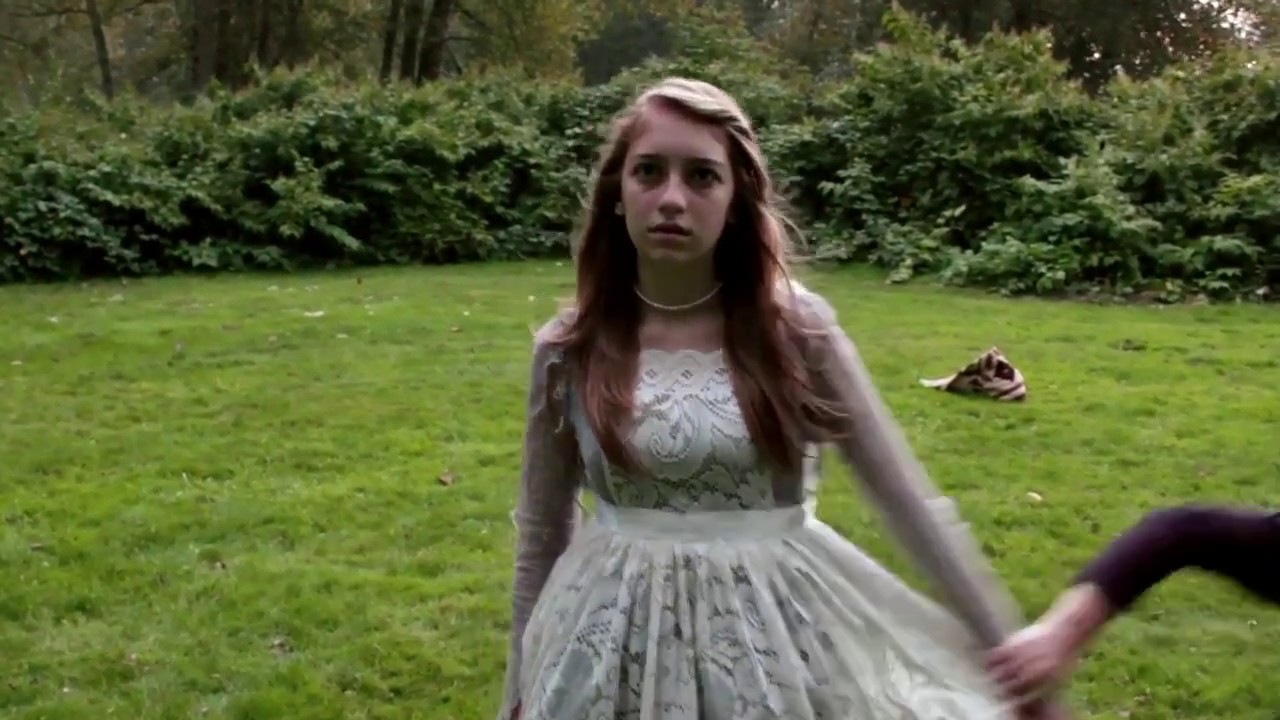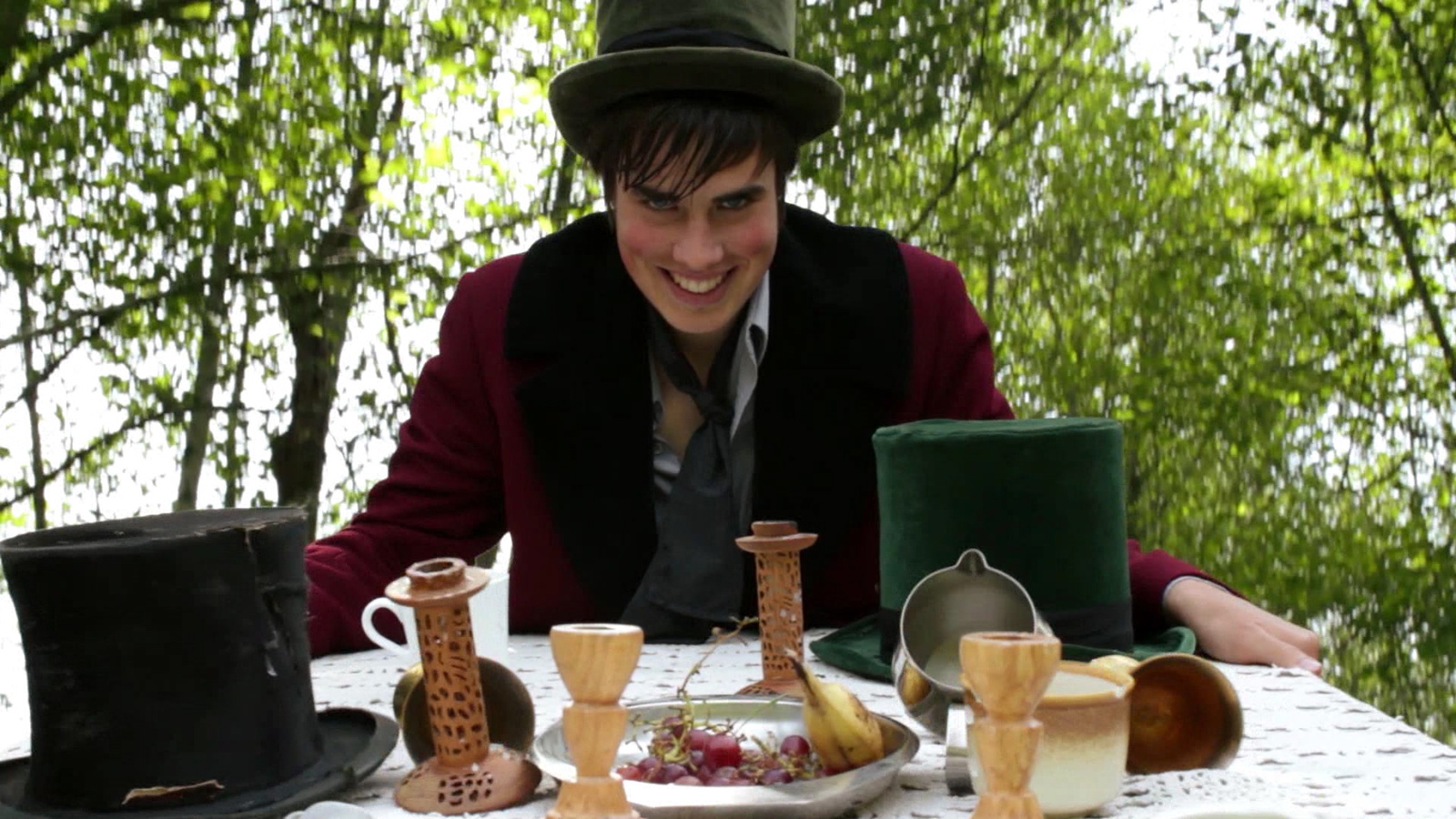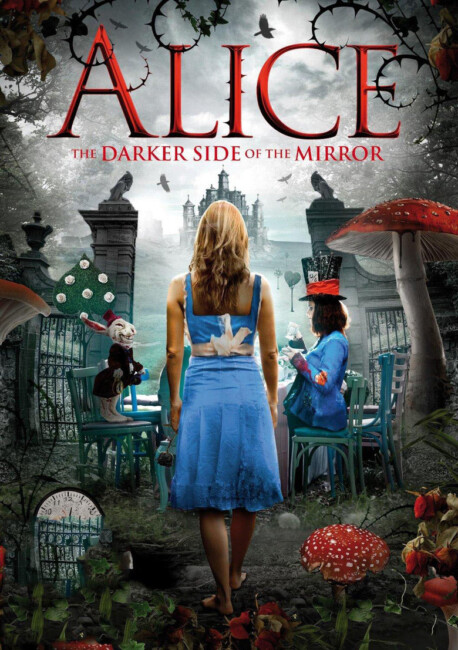aka Alice: The Darker Side of the Mirror
USA. 2016.
Crew
Director/Screenplay – Zach Hamer, Photography – Claude Bauschinger, Set Design – Mike Marlin. Production Company – ZN Productions.
Cast
Selena Tibert (Alice), Doug Zwick (Lewis Carroll), Nathan Hamer (The Painter), Trey Hatch (The Doctor), Carolyn Hatch (The Queen), Si McGrady (The Caterpillar), Stephanie Brisky (Alice’s Sister), Andy Friedlander (Heroin Soldier), Lyndsey Bowen (Alice’s Mother)
Plot
It is 1905. Alice is grieving after the death of her mother and is not happy at having to go to school where they have relocated. She keeps seeing a strange man wearing white shoes. While having tea in the garden with her sister, she follows the man with white shoes down a rabbit hole and finds herself in a bewildering world. As she passes through the world, encountering its variously mad and drug-induced denizens, and trying to find her way back home again, she has difficulty retaining her size and remembering who she is.
The Other Side of the Mirror, although it appears to be more popularly known as Alice: The Darker Side of the Mirror, is an attempt to offer a modern interpretation of Alice in Wonderland (1865). We have seen this several times before with Alice’s Misadventures in Wonderland (2004), the tv mini-series Alice (2009), which offered a science-fictional take, Malice in Wonderland (2009), Alyce (2011) and Alice in Terrorland (2023), even an Alice in Wonderland-themed slasher film with Alice in Murderland (2010). The implication that comes with a title like The Darker Side of the Mirror is that what we get is no longer a wholesome version of Alice in Wonderland but one where the characters are much darker if not sinister.
At least this is the intriguing notion that one gets before watching The Other Side of the Mirror. I am not sure that this is something that it achieves. Some of the film seems completely arbitrary. Alice’s venture through the portal is intercut with random footage of shoals of fish and jellyfish. In one scene, for no apparent reason, she seems to stumble onto a Civil War battlefield (did I also mention that this is an Alice in Wonderland that seems to have gotten transplanted from the UK to the USA?)

There are versions of the characters that are slightly darker than usual – Doug Zwick, billed as a character called Lewis Carroll, plays the White Rabbit, March Hare and Cheshire Cat; the Tea Party happens where the Mad Hatter seems to worry about being carted away to an asylum; The Caterpillar inhabits an opium den. Towards the end, Alice is made to work in a factory, before a group of people riot in the alley outside and are beaten up by police. The head of the factory is played by Carolyn Hatch, who also plays Alice’s schoolteacher, and we realise that she is meant to be the film’s version of the Red Queen.
It leaves you wondering what the actual purpose of this interpretation of Alice in Wonderland was. It is not a parody. It cannot be said to be a modernisation – for one, it remains set in 1905 and, bar the addition of motor cars in the street and the US settings, is little different to a standard interpretation. Nor does the supposedly modern lens gives us radically different retellings of the characters as say the mini-series Tin Man (2007) and the tv series Emerald City (2017) did with The Wizard of Oz (1939).
At most, the overriding impression you get is that everybody in Wonderland seems to partake in narcotics of some fashion – Alice is given pills by the White Rabbit, The Caterpillar imbibes from the pipe as she visits him in an opium den, the attendees at the Tea Party drink not wine but cough syrup, and Alice later meets a rundown soldier (possibly meant to be the White Knight?) who shoots up heroin intravenously.

The Other Side of the Mirror/Alice: The Darker Side of the Mirror feels haphazard. It is a show put on by an amateur theatrical group (with the aid of several historical re-enactment groups) rather than a film. Occasionally the script quotes some of Lewis Carroll’s lines but mostly the plot is in a random order. It is often hard to tell how scenes relate to Alice in Wonderland. Zach Hamer’s direction is not very good, while his cast seem to be looking around for direction. An appropriate indication of how people felt about the film is the fact that it has a 2011 copyright day but was not actually released until 2016.
The Other Side of the Mirror was the second film for Zach Hamer, his first solo effort after co-directing the earlier Re-enactors (2012) about an historical re-enactment group.
The other screen adaptations of Alice in Wonderland are:- Alice in Wonderland (1903), a silent British short; Alice’s Adventures in Wonderland (1910), a silent American short; Alice in Wonderland (1915); Alice Through the Looking Glass (1928); Alice in Wonderland (1931), the first sound version; Paramount’s Alice in Wonderland (1933) with an all-star cast of the day including W.C. Fields, Cary Grant and Gary Cooper; the partly stop-motion animated French Alice in Wonderland (1949); the classic Disney animated version Alice in Wonderland (1951); the NBC tv version Alice in Wonderland (1955); the modernised Hanna-Barbera animated tv special Alice in Wonderland, or What’s a Nice Kid Like You Doing in a Place Like This? (1966); the NBC tv production Alice Through the Looking Glass (1966); the all-star British film Alice’s Adventures in Wonderland (1972) featuring Michael Crawford, Ralph Richardson, Peter Sellers, Spike Milligan and Dudley Moore; the BBC tv production Alice Through the Looking Glass (1974); the Italian tv mini-series In the World of Alice (1974); a 1976 Argentinean film version; a pornographic version Alice in Wonderland (1976); a Spanish film version Alice in Spanish Wonderland (1979); the Belgian film Alice (1982), which features equivalents of the Wonderland characters in the modern world; a US tv production Alice in Wonderland (1982); a US tv version Alice at the Palace (1982) with Meryl Streep as Alice; a BBC musical version A Dream of Alice (1982) with Jenny Agutter as Alice; a British tv series Alice in Wonderland (1985); Irwin Allen’s all-star tv mini-series Alice in Wonderland (1985) featuring Roddy McDowall, Telly Savalas and Shelley Winters; a BBC tv series Alice in Wonderland (1986); the animated Alice Through the Looking Glass (1987); having been combined with the Care Bears in the animated The Care Bears Adventure in Wonderland (1987); Jan Svankmajer’s bizarrely brilliant Claymation animated Alice (1988); Woody Allen’s modernised urban spin Alice (1990); the US tv series Alice in Wonderland (1991); the British tv version Alice Through the Looking Glass (1998) with Kate Beckinsale as Alice and an all-star cast; the Hallmark tv version Alice in Wonderland (1999) with Tina Majorino as Alice and an all-star cast; Alice’s Misadventures in Wonderland (2004), a modernised indie film take on the story; Alice (2009), a modernised tv mini-series starring Caterina Scorsone as Alice entering into a dark science-fictional wonderland; Malice in Wonderland (2009), a modernised British film that translates Wonderland into an urban environment; Alice in Murderland (2010), an Alice in Wonderland-themed slasher film; Tim Burton’s big budget Alice in Wonderland (2010) and its sequel Alice Through the Looking Glass (2016); Alyce (2011), another modernised urban translation; and the modernised tv series Once Upon a Time in Wonderland (2013-4). Also of note is Dennis Potter’s tv play Alice (1965), which explores Lewis Carroll’s relationship with Alice Liddell, the young girl who became the model for Alice, and the later film Dreamchild (1985) in which the real-life Alice reminisces back on her memories of Lewis Carroll and the writing of the story.
Trailer here


